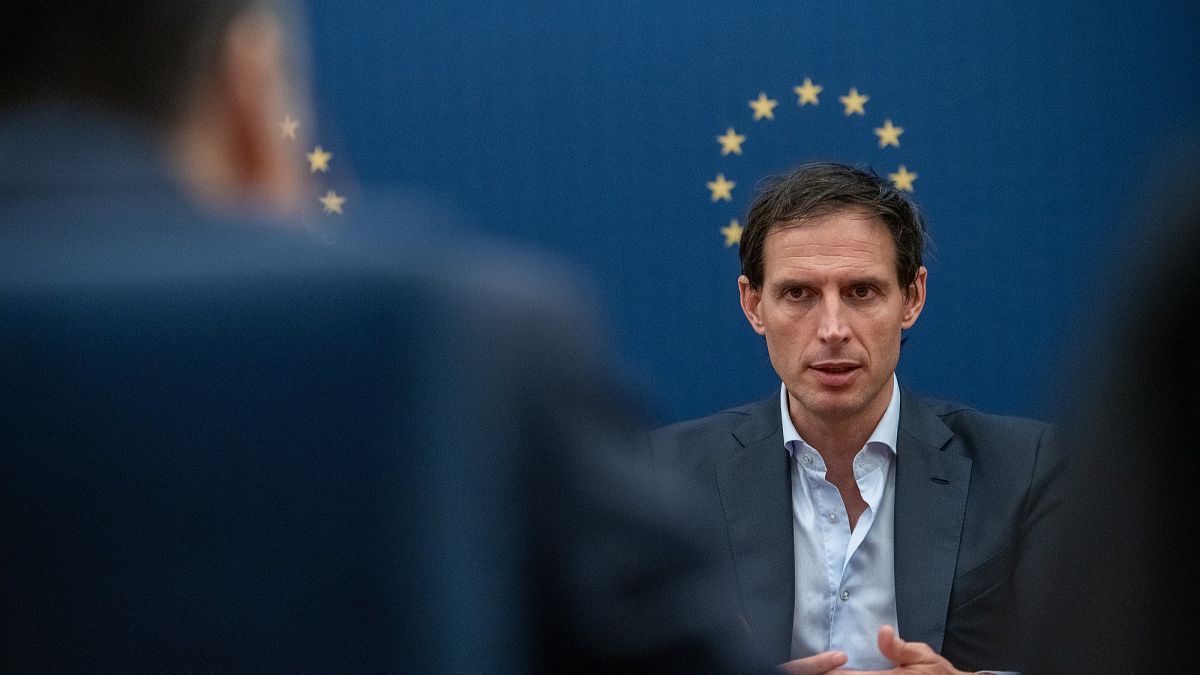Latest reports show the EU is bucking a global trend for continuously rising emissions, but still not on track to meet its own climate action targets.
The EU’s climate commissioner has seized on a sharp fall in emissions across the bloc as evidence that climate action is not incompatible with economic growth, as he prepares for the major UN climate summit in Azerbaijan next month.
“As we head off soon to COP29, we once again demonstrate to our international partners that it is possible to take climate action and invest in growing our economy at the same time,” Wopke Hoekstra said as the European Commission published the 2024 edition of its annual EU Climate Action Progress Report.
The headline figure was an 8.3% drop in greenhouse gas emissions, a fall not seen since the anomaly of 2020, when covid pandemic lockdowns combined with mild weather to reduce carbon output by 9.8%, followed by a rapid rebound.
While emissions in Europe are now 37% below the baseline year of 1990, the union is still a long way from its 2030 target of net reduction of at least 55%.
The drop, based on preliminary data from national governments, brings the EU’s annual carbon footprint measured in CO2 equivalent to just 6% of a global total of 53 billion tonnes a year – a record figure that represents a 1.9% increase on 2022 worldwide.
“Sadly, the report also shows that our work must continue, at home and abroad, as we are seeing the harm that climate change is causing our citizens,” added Hoekstra, who will head the EU’s negotiating team in the Azeri capital Baku, where the COP29 opens on 11 November.
The fall in emissions is distributed highly unevenly across sectors. The power stations and factories that must pay for each tonne of CO2 they emit under EU emissions trading scheme have seen CO2 equivalent output fall by over 47% since it came into effect in 2005.
Emissions linked to buildings, agriculture, domestic transport, small industry and waste fell by a relatively modest 2% in 2023. The biggest increase was in aviation, with emissions up 9.5% year on year.
Releasing its ‘Trends and Projections’ report in parallel today, the European Environment Agency (EEA) put Europe’s shrinking carbon footprint down mainly to a significant decline in the burning of coal, combined with continuing deployment of renewable energy sources like wind and solar and an overall drop in energy demand.
The EEA balanced Hoekstra’s bullish tone with a warning about an apparent lack of commitment among EU governments to push emissions down further, in line with longer-term targets.
Existing climate action measures would result in only a 43% reduction by 2030, and even additional projections submitted by 22 member states point to only a 49% reduction overall, and that is based on “planned but not yet launched measures”.
Leena Ylä-Mononen, EEA executive director, said “comprehensive action across all sectors” would be needed to over the next quarter century to meet the EU’s ultimate – and legally binding – goal of reaching zet-zero emissions.
“As our recent European climate risk assessment revealed, the impact of climate change is accelerating,” Ylä-Mononen said. “This leaves us no choice but to strengthen our resilience to climate change and reduce greenhouse gas emissions.”
Read the full article here
















